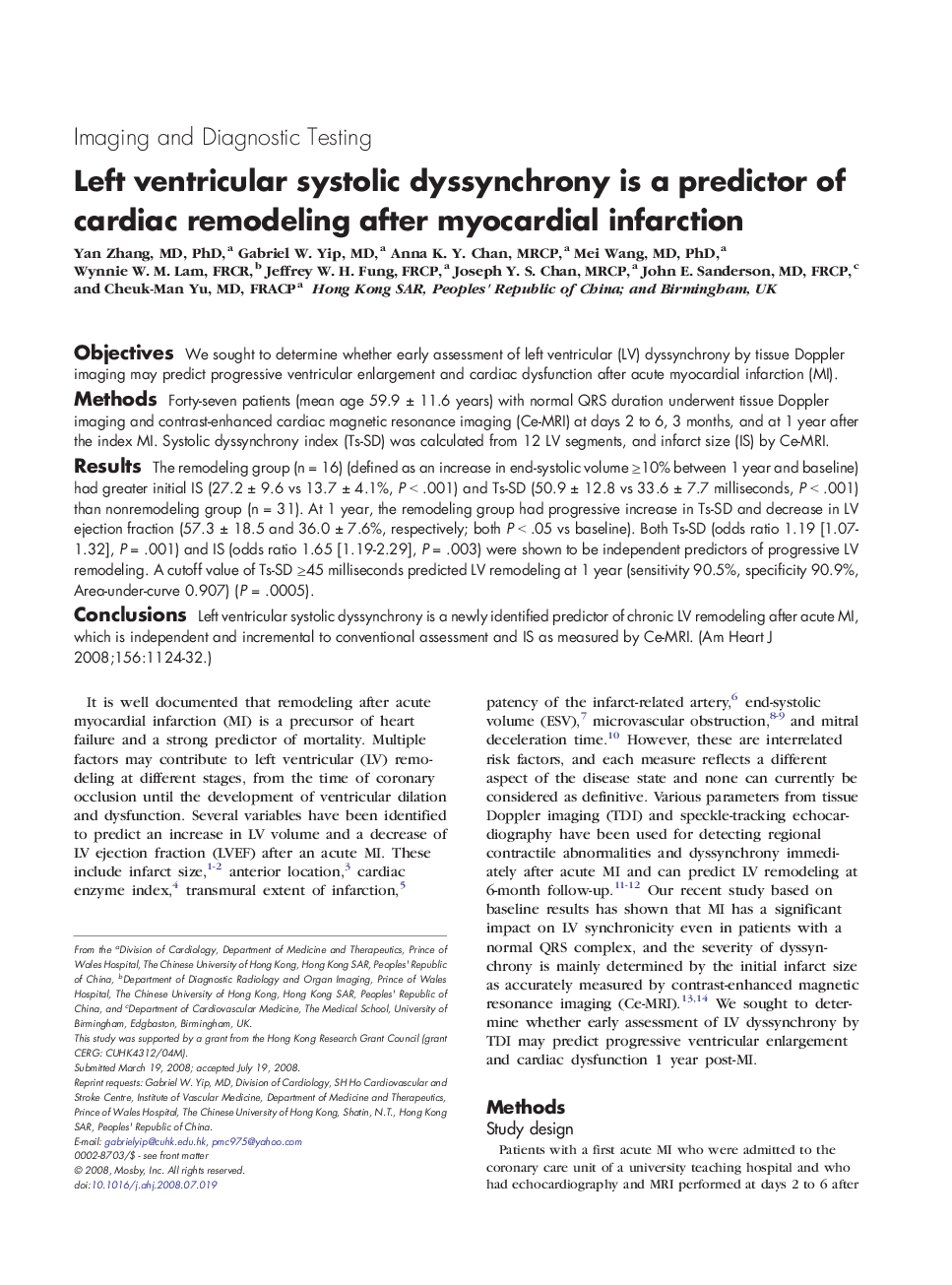| Article ID | Journal | Published Year | Pages | File Type |
|---|---|---|---|---|
| 2849827 | American Heart Journal | 2008 | 9 Pages |
ObjectivesWe sought to determine whether early assessment of left ventricular (LV) dyssynchrony by tissue Doppler imaging may predict progressive ventricular enlargement and cardiac dysfunction after acute myocardial infarction (MI).MethodsForty-seven patients (mean age 59.9 ± 11.6 years) with normal QRS duration underwent tissue Doppler imaging and contrast-enhanced cardiac magnetic resonance imaging (Ce-MRI) at days 2 to 6, 3 months, and at 1 year after the index MI. Systolic dyssynchrony index (Ts-SD) was calculated from 12 LV segments, and infarct size (IS) by Ce-MRI.ResultsThe remodeling group (n = 16) (defined as an increase in end-systolic volume ≥10% between 1 year and baseline) had greater initial IS (27.2 ± 9.6 vs 13.7 ± 4.1%, P < .001) and Ts-SD (50.9 ± 12.8 vs 33.6 ± 7.7 milliseconds, P < .001) than nonremodeling group (n = 31). At 1 year, the remodeling group had progressive increase in Ts-SD and decrease in LV ejection fraction (57.3 ± 18.5 and 36.0 ± 7.6%, respectively; both P < .05 vs baseline). Both Ts-SD (odds ratio 1.19 [1.07-1.32], P = .001) and IS (odds ratio 1.65 [1.19-2.29], P = .003) were shown to be independent predictors of progressive LV remodeling. A cutoff value of Ts-SD ≥45 milliseconds predicted LV remodeling at 1 year (sensitivity 90.5%, specificity 90.9%, Area-under-curve 0.907) (P = .0005).ConclusionsLeft ventricular systolic dyssynchrony is a newly identified predictor of chronic LV remodeling after acute MI, which is independent and incremental to conventional assessment and IS as measured by Ce-MRI.
